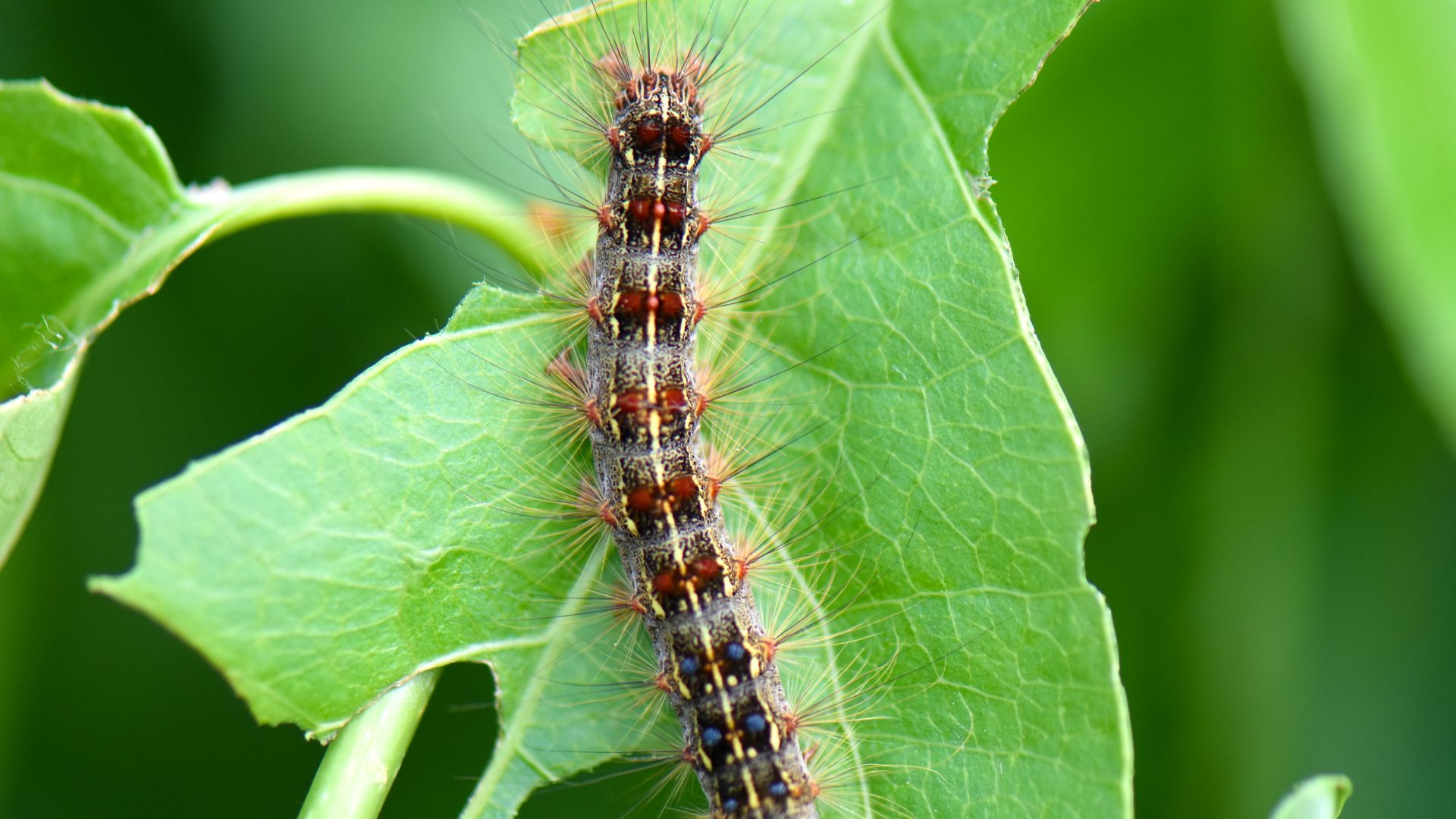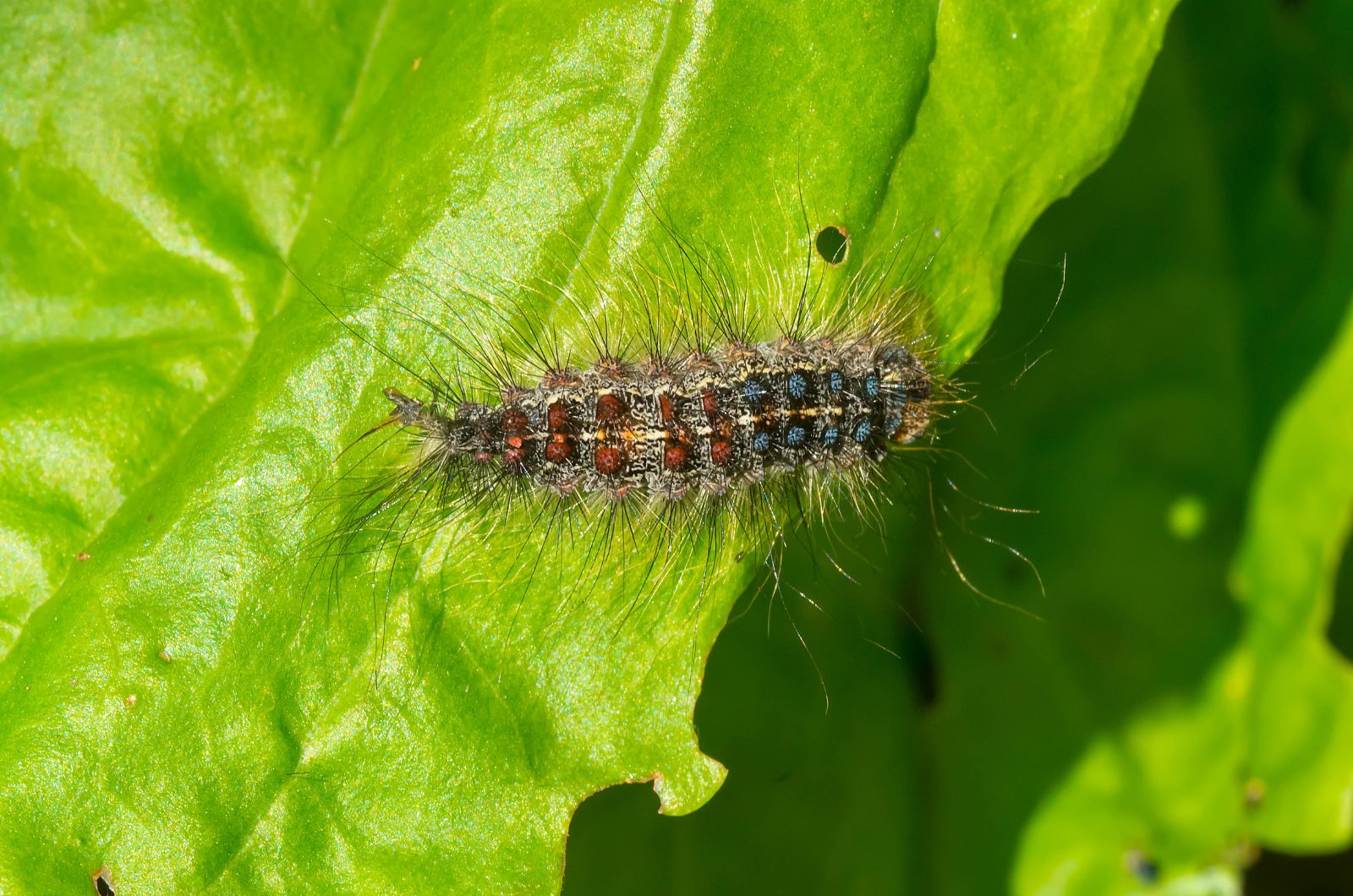I woke up one summer morning and found a horrorshow in my yard – all of the leaves from my trees had mysteriously vanished, and there were swarms of fuzzy caterpillars all over them! What were they?!
Of course, I immediately called my brother and he explained the situation. Turns out this unfortunate scene isn’t just from a horror movie – it’s the work of the spongy moth, an invasive species introduced for silk production in 1869.
Since then, they periodically create chaos in forests and backyards alike, particularly favoring oak trees. How to spot them, and more importantly, how to protect your trees from these critters, matters the most.
Finding their obvious leaf damage early and handling their egg clusters can protect your trees from getting eaten. If you’re already dealing with an infestation, there are other options (putting up traps or calling in the pros). But sometimes, nature finds its own way to bring things back into balance.
Don’t worry because I’m going to share with you how I dealt with my spongy moth infestation. I hope it will help you claim your trees back!
You Can Set Burlap Traps, Use Sprays, Or Call In The Pros
Just because you spot a spongy moth doesn’t mean your entire garden is doomed (I already started saying goodbye to my beloved plants, what a fool).
I’ve learned that healthy trees can usually handle a bit of nibbling once a season. However, spongy moths are sneaky invaders that spread fast, laying their eggs on anything solid (cars, firewood, you name it).
I once found some on my garden tools, so don’t forget to check those as well!
If they’re only on one or two trees, try making a burlap trap. Just tie a wide strip of burlap around the tree trunk and fold the top half down. They’re not the brightest when it comes to climbing over obstacles.
Then, just scrape them off into soapy water – no fuss.
Spraying caterpillar killers like Bt can be used as well, but it won’t pick and choose when dealing with insects, and ends up taking out helpful butterflies and moth caterpillars too!
Remember to wear gloves since some folks might be allergic to these pests.
If things get out of hand, it might be time to call in the pros. Licensed arborists can handle insecticides and reach the highest branches.
Weigh the pros and cons before you spray insecticides because they might harm beneficial bugs as well.
The third option is to let nature take care of it. I wanted to try this and hope for the best, but I still tied some burlaps (just in case).
Here’s what might happen if you just rely on Mother nature:
Or You Might Let Nature Handle Small Spongy Moth Outbreaks
The other option is letting nature take its course for less severe spongy moth infestations.
These major outbreaks seem to roll around about every 10 years and typically last 3 to 4 years. While large-scale spraying has been a go-to during the worst infestations, there are also some natural remedies you can try.
Now, you might think a simple vinegar trick to stop caterpillars from munching away in your garden sounds perfect, but that’s not quite what I mean by “natural remedies”.
Believe it or not, there are fungal and viral infections that target spongy moth caterpillars during the worst outbreaks, knocking out these critters without you lifting a finger.
One of the spongy moth’s mortal enemies is the nuclear polyhedrosis virus (NPV). Caterpillars infected with this virus will cling to the side of a tree in a telltale “V” shape.
Then there’s Entomophaga maimaiga, a fungus introduced from Japan that specifically targets spongy moth larvae without harming other species. Caterpillars killed by this fungus also cling to trees, but with their heads hanging down.
Your job in this natural battle is to simply leave any diseased larvae to spread the infection and help control the population.
But did you know that nature also lends a hand in other ways? I am talking about attracting birds into your garden!
Transforming your yard and garden into a bird paradise not only lets you enjoy some bird watching, but these feathery friends will also happily snack on larvae.
So, if you see these critters on your tree, don’t panic! Either let nature nurture them back to health or set up some burlap traps to prevent them from spreading.
Also read: This Ordinary Kitchen Scrap Might Just Be Holding The Key To Banishing Mealybug Infestations


